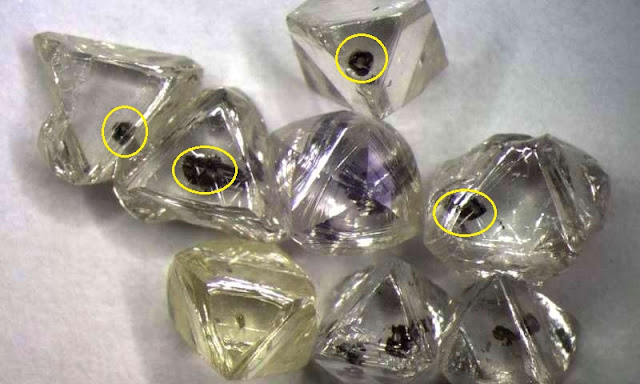Diamond’s P-billion-yr progress charts tectonic shift in early Earth’s carbon cycle
“[The] discovering means that natural materials from organic sources might have been extra ample in diamond-forming zones early within the Earth’s historical past than we discover right now,” stated lead researcher Suzette Timmerman.
A research of tiny mineral ‘inclusions’ inside diamonds from Botswana has proven that diamond crystals can take billions of years to develop. One diamond was discovered to include silicate materials that shaped P.A billion years in the past in its inside and a 250 million-yr-previous garnet crystal in the direction of its outer rim, the most important age vary ever detected in a single specimen.
Analysis of the inclusions additionally means that the best way that carbon is exchanged and deposited between the environment, biosphere, oceans and geosphere might have modified considerably over the previous P.H billion years.
‘Although a jeweller would think about diamonds with plenty of inclusions to be flawed, for a geologist these are probably the most useful and thrilling specimens,’ stated Prof Gareth Davies, of Vrije Universiteit (VU) Amsterdam, who co-authored the research. ‘We can use the inclusions so far totally different elements of a person diamond, and that permits us to probably take a look at how the processes that shaped diamonds might have modified over time and the way this can be associated to the altering carbon cycle on Earth.’
Sixteen diamonds from two mines in north japanese Botswana have been analysed within the research: seven specimens from the Orapa mine and 9 from the Letlhakane mine. A staff at VU Amsterdam measured the radioisotope, nitrogen and hint factor contents of inclusions inside the diamonds.
Although the mines are situated simply forty kilometres aside, the diamonds from the 2 sources had vital variations within the age vary and chemical composition of inclusions.
The Orapa diamonds contained materials courting from between round four hundred million and greater than B.A billion years in the past. The Letlhakane diamond inclusions ranged from lower than seven hundred million and as much as P-P.H billion years previous. In each case, the group have been capable of hyperlink the age and composition of fabric within the inclusions to distinct tectonic occasions occurring regionally within the Earth’s crust, akin to a collision between plates, continental rifting or magmatism. This means that diamond formation is triggered by warmth fluctuations and magma fluid motion related to these occasions.
The Letlhakane diamonds additionally offered a uncommon alternative to look again in time to the early Earth. The oldest inclusions date again to earlier than the Great Oxidation Event (GOE) round P.O billion years in the past, when oxygen produced by multicellular cyanobacteria began to fill the environment, radically altering the weathering and sediment formation processes and thus altering the chemistry of rocks.
‘The oldest inclusions within the diamonds include a better proportion of the lighter carbon isotope. As photosynthesis favours the lighter isotope, carbon 12, over the heavier carbon thirteen, this ‘mild’ ratio discovering means that natural materials from organic sources might have been extra ample in diamond-forming zones early within the Earth’s historical past than we discover as we speak,’ defined Suzette Timmerman, lead writer on the research.
‘Higher temperatures within the Earth’s inside earlier than the GOE might have affected the best way that carbon was launched into the diamond forming areas beneath the Earth’s continental plates and could also be proof of a elementary change in tectonic processes. However, we’re presently working with a really small dataset and wish additional research to determine if this can be a international phenomenon.’
The above publish is reprinted from materials offered by Europlanet Media Centre.
